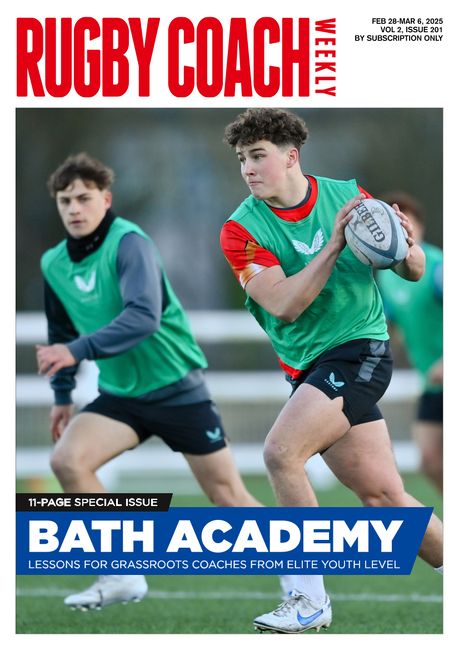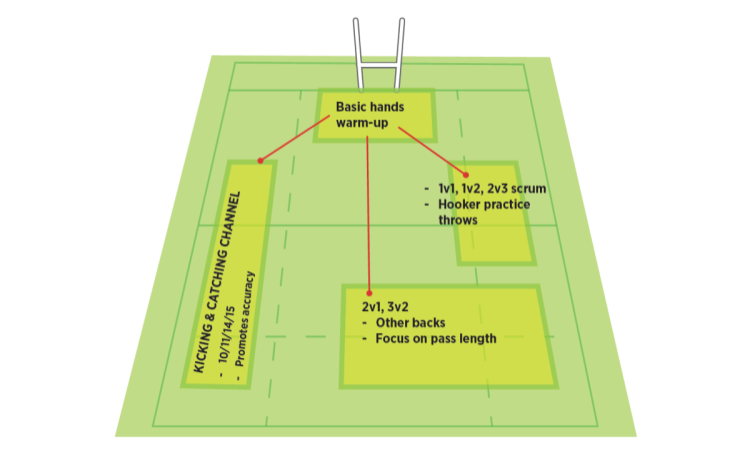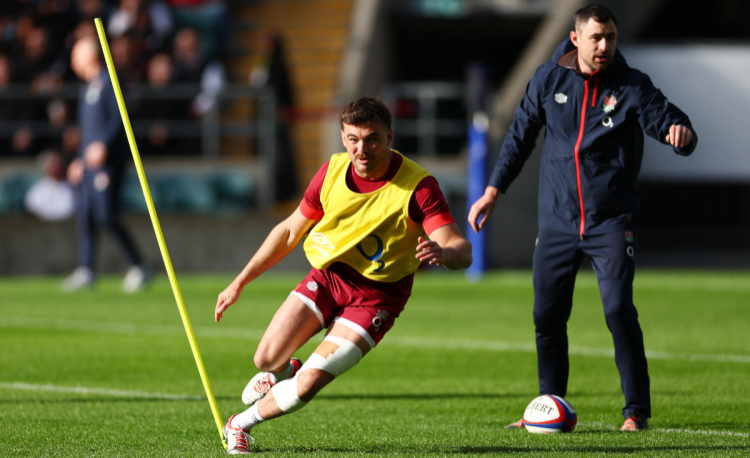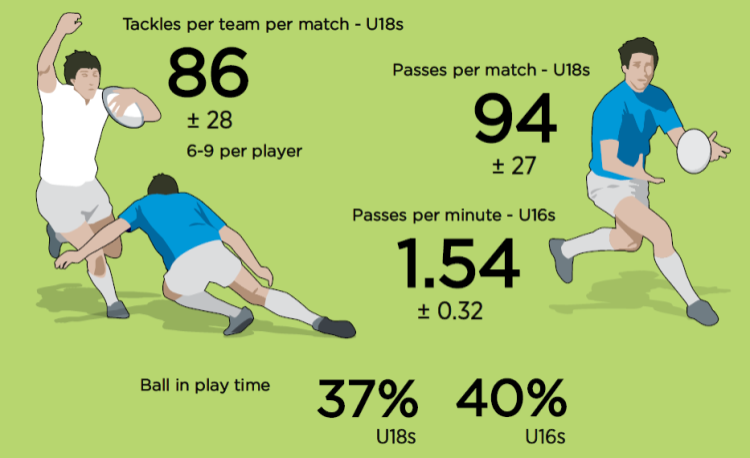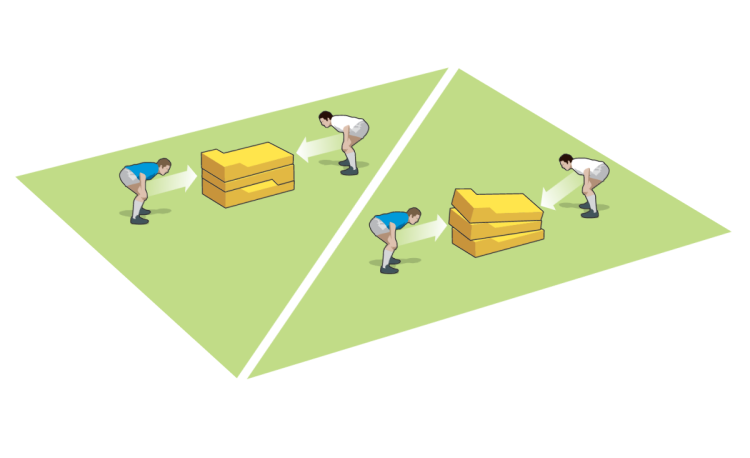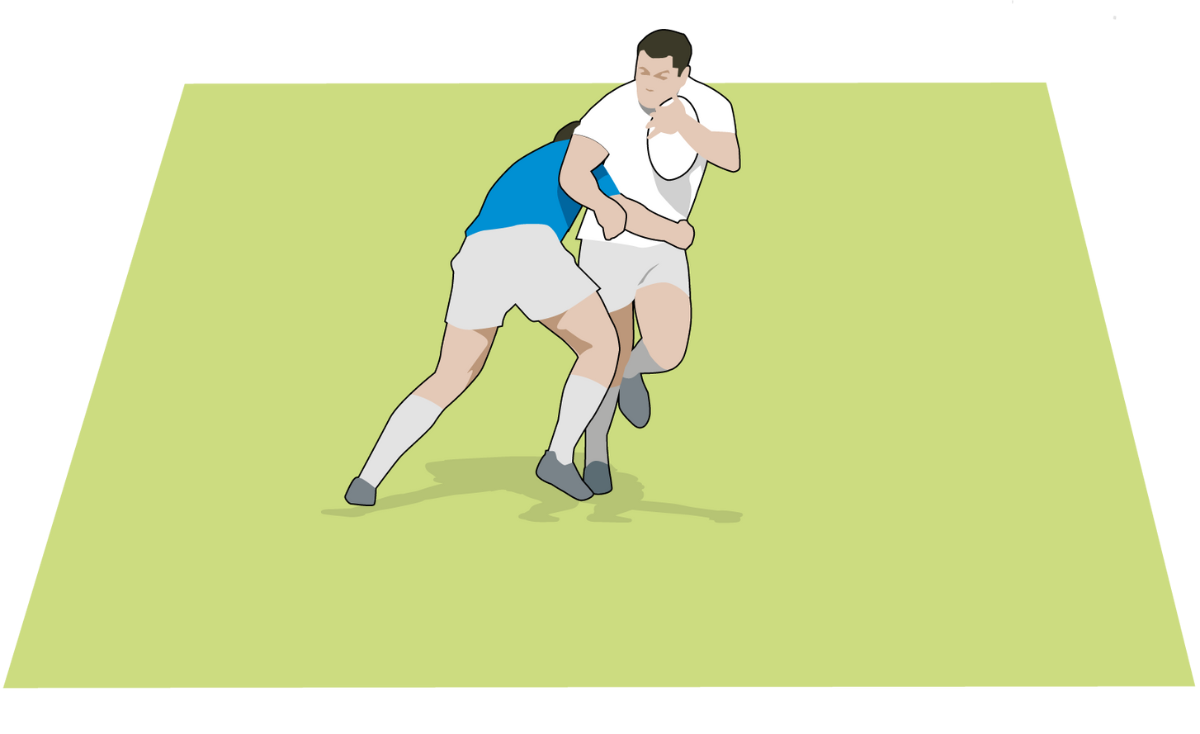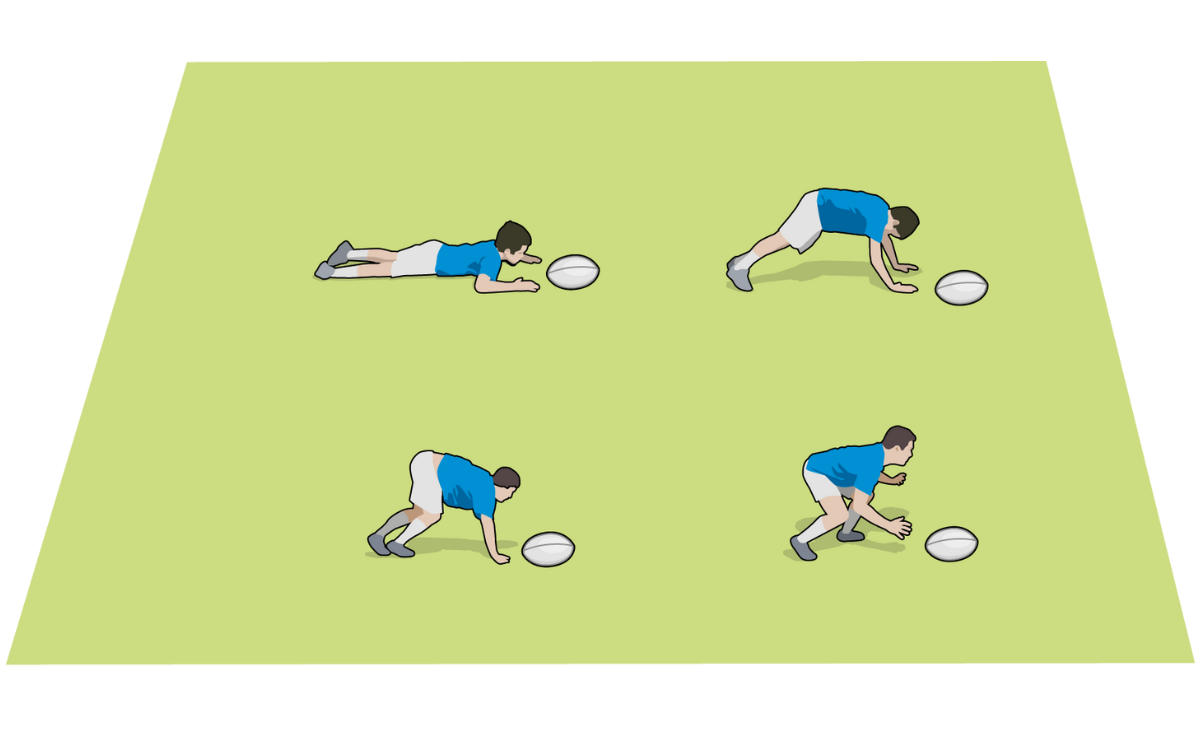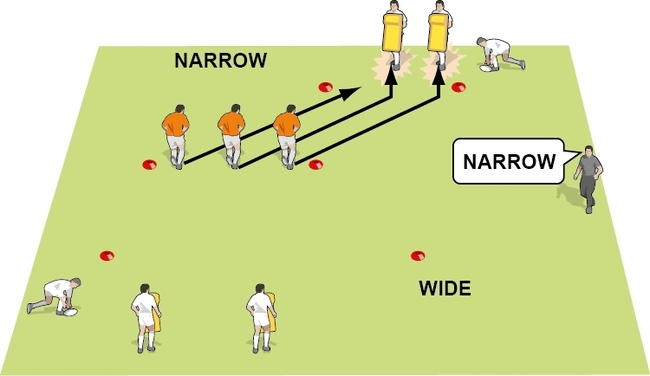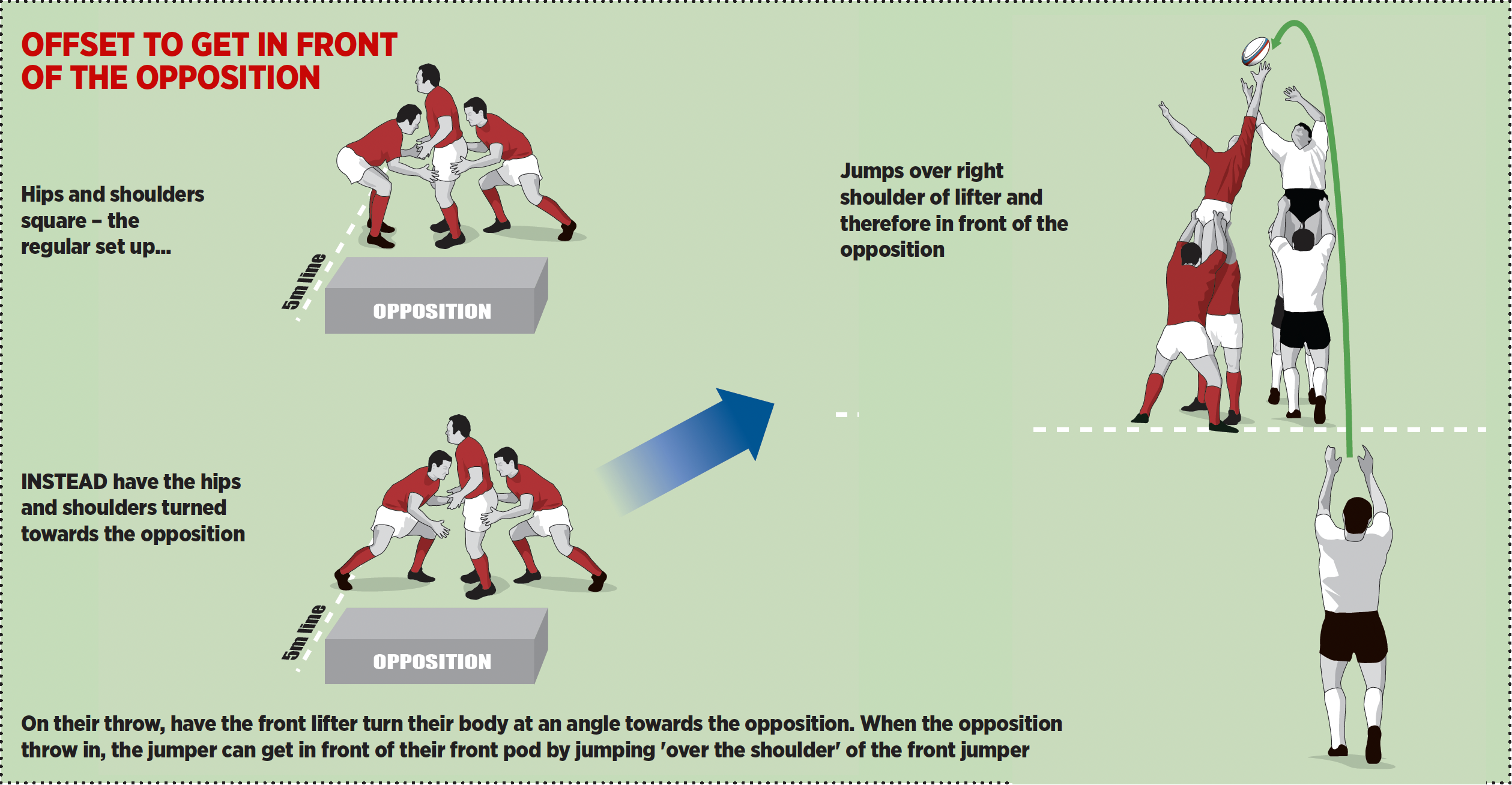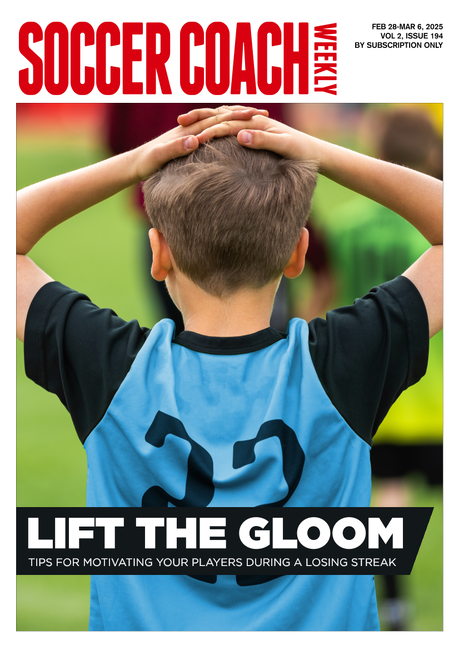Sprint start rugby training drill
In this article I explain how you can make your players quicker off the mark by concentrating on their body angle and balance.
Start like a sprinter, run like a rugby player
In general, rugby players do not sprint for any great distance. Therefore their essential speed requirement is acceleration.
In our mind's eye we see world class sprinters with an upright stance and high knees, but that's not how rugby players have to run.
They run more like a world class sprinter would in their first 10 metres: head down, vigorous arm action, hips and chest forward, and for the first few steps moving from side to side. In fact, the action looks like an ice hockey player accelerating.
The action is about applying pure strength to the ground very efficiently, with the player leaning forward a bit.
Key 1: Get the sprinter's body angle right
Out of the blocks the world class sprinter leans forward through his whole body, and by as much as 45 degrees. This gives them a very efficient straight line from the toes through the hips to the head and shoulders, as in the picture below.
This means that his hips have to be forward rather than sticking out the back, with the chest also forward.
You can teach the importance of this to your players by making them lean against a wall. Their hands should be in front of the shoulders and against the wall, the body leaning toward the wall, trying to push the wall down.
Now get them to move their hips back off-line and to try again!
You should find that the straight line through the hips is the strongest position and makes best use of their strength, pushing the ground back.

Key 2: Balance the acceleration
When the player accelerates, his trunk twists. Usually the left-right movement of the legs and the arms act to counter this.
Nonetheless, there may be excessive twist. This contributes to poor balance and slower running, so it must be reduced.
There are three ways to counter the trunk rotation.
1. Better pelvic stability
This can be improved with exercises to strengthen the core.
2. Strong arm movement
More often than not players accelerate on the field without the ball. There is, therefore, every reason to practise using the arms when accelerating.
A strong arm movement during the first few strides, but not a short, busy arm movement, can increase speed. The arm movement should be forward of the line of the trunk, with the elbows bent almost to 90 degrees, and then a strong downward drive through a long arc.
Players shouldn't worry about the backswing. With the shoulders dropped to increase the range of arm movement that will take care of itself.
3. Balanced bodies
Spindly arms working against powerful legs don't balance, so it is important that players maintain upper body strength. Just look at the top sprinters in athletics and their upper body look.
This article is taken from the Better Rugby Coaching e-newsletter. Click here to sign up and get free rugby drills and skills twice a week.
Newsletter Sign Up
Coaches Testimonials

Gerald Kearney, Downtown Las Vegas Soccer Club

Paul Butler, Florida, USA

Rick Shields, Springboro, USA

Tony Green, Pierrefonds Titans, Quebec, Canada
Subscribe Today
Be a more effective, more successful rugby coach
In a recent survey 89% of subscribers said Rugby Coach Weekly makes them more confident, 91% said Rugby Coach Weekly makes them a more effective coach and 93% said Rugby Coach Weekly makes them more inspired.
Get Weekly Inspiration
All the latest techniques and approaches
Rugby Coach Weekly offers proven and easy to use rugby drills, coaching sessions, practice plans, small-sided games, warm-ups, training tips and advice.
We've been at the cutting edge of rugby coaching since we launched in 2005, creating resources for the grassroots youth coach, following best practice from around the world and insights from the professional game.


